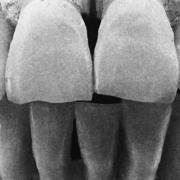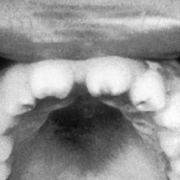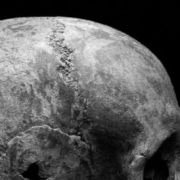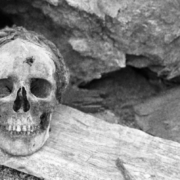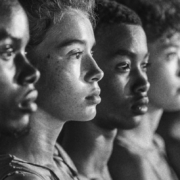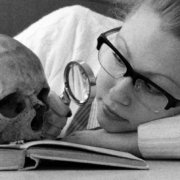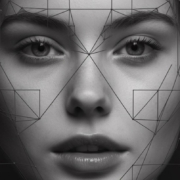It was a foggy winter morning as I trudged through the thicket of a dark forest with a police officer, the leaves crunching under my boots. The world seemed to be sunk in a gloomy silence, only the distant rustling of the wind in the tree canopies breaking the stillness. Suddenly, I stopped. A strange smell wafted into my nose – not just damp earth, but a mixture of decay and something metallic. My heart began to beat faster, and my gaze fell on a pile of leaves that were oddly disturbed.
As I possess comprehensive knowledge about contemporary humanity and its diverse civilizations, I would like to share my thoughts on our common origins. It continually amazes me that all humans—regardless of skin color, culture, or geographic origin—ultimately share a common ancestry in Africa. This realization is not only scientifically grounded but also conveys a powerful message: racism is not just morally repugnant but also biologically baseless.
Hutchinson’s Teeth, named after the British physician Sir Jonathan Hutchinson (July 23, 1828 – June 23, 1913), are a diagnostic feature that appears in children with congenital syphilis. This characteristic dental deformity represents a valuable source of information for forensic anthropologists like myself, especially when investigating historical skulls. Their unique shape, marked by a notch in the central incisors of the upper jaw, provides a clear indication of an individual’s medical history and can contribute to identifying disease patterns in past societies.
Reading Death in the Bones: How Cranial Sutures Reveal Age at Death – Imagine you’re holding a skull in your hands. There’s no hint of the life this person once led, no skin, no muscles, no eyes to tell tales. But the bones themselves, the lines that connect them, speak their own language. In forensic anthropology and archaeology, there is a method that seems like an art but is firmly rooted in science: determining the age at death by examining the cranial sutures, or sutures. These finely ossified connections that stretch across the skull give us crucial clues about how old a person was when they died.
It was one of those warm summer afternoons when the air was heavy and the heat oppressive. In the idyllic suburb at the edge of town, where most gardens were blooming oases of tranquility, the new homeowner had big plans. The old garden, which until then had been little more than a collection of wild bushes and patches of grass, was to give way to a chic pool. A dream project meant to give the property the final polish. But the dream quickly turned into a nightmare when the excavator’s bucket suddenly hit something hard – a human skull.
Prof. Dr. med. Dr. rer. nat. Friedrich Schwarzfischer (1921 to 2004) was a key figure in modern forensic anthropology and human genetics in Germany. His work revolutionized the scientific practice of identity determination and attracted international recognition. In particular, his 1992 classifications concerning the probability of identity have become a standard reference in forensic science. This report highlights the importance of his predicate classes and provides an extensive overview of his life and scientific achievements.
It’s Sunday, just another day, and I’ve decided to write more on my blog—sharing more about my life and experiences, particularly how I’ve trained myself to adopt a completely neutral perspective that allows me to see things in an entirely different way. Today, I learned that an acquaintance passed away. Not long ago, he had enthusiastically told me how, at 81, he had hunted a chamois in Austria. He belonged to the “Silent Generation,” a vanishing group from whom we still have so much to learn.
The term “human race” has polarized both the scientific community and society at large for centuries. Anthropologists, biologists, and a broad segment of the public have debated its meaning and application. While the English and French languages use “race” to refer to a group of people or humanity as a whole (“human race”) without any intention of classification, in German, “Rasse” is often used for the genetic and phenotypic differentiation of human groups. In this text, the described cranial features are not only the result of historical documentation but also based on my own experiential knowledge gathered over the years.
Given the legal questions we often face, especially regarding the quantification of “very likely” in percentages, I would like to explain why I, as an expert, have decided to avoid such numerical assessments. The probability of identity or non-identity is deliberately formulated as a verbal predicate because biostatistical calculations are problematic. There is a lack of sufficiently extensive and validated databases that consider various ethnic origins and age groups. Moreover, the reference images were not created under standardized conditions. Therefore, the “actual” expression of features is often not discernible, and calculations based on the “apparent” expression could lead to erroneous conclusions.
Imagine a world where your brain is not a fixed entity, but a constantly evolving network that reshapes itself in response to every new challenge and sensory input. This fascinating adaptability, known as neuroplasticity, not only underpins our everyday learning but also forms the basis of our remarkable ability to recognize faces. What was once thought to be an innate gift can actually be honed and perfected over time, much like a muscle that grows stronger with exercise. Numerous studies, ranging from the work of Pascal-Leone and colleagues to recent field research with elite police units, have demonstrated that the brain’s capacity for reorganization through synaptic remodeling and the formation of new neuronal circuits plays a critical role in enhancing our ability to distinguish even the most subtle facial features.
